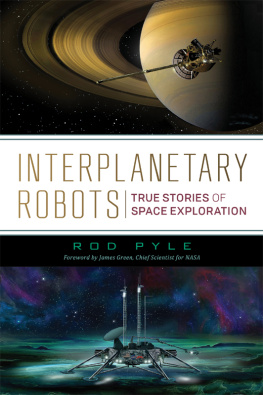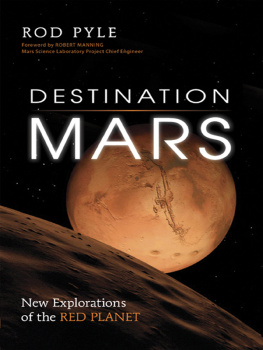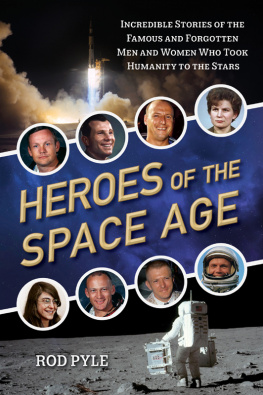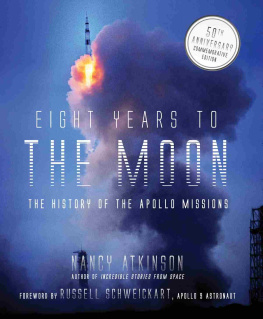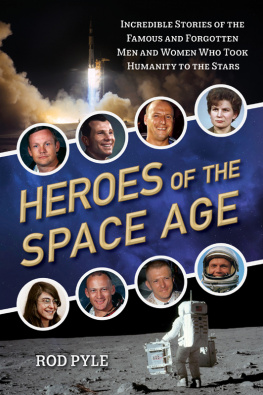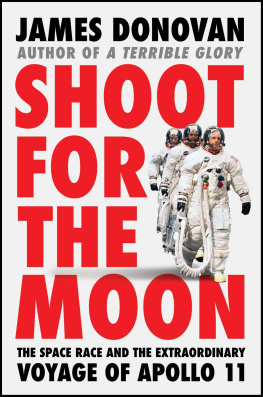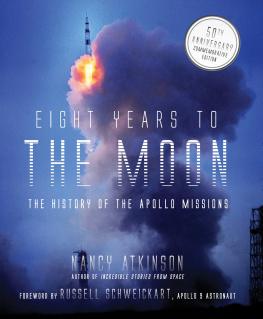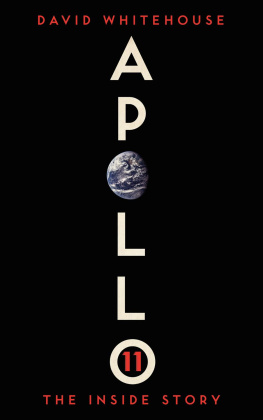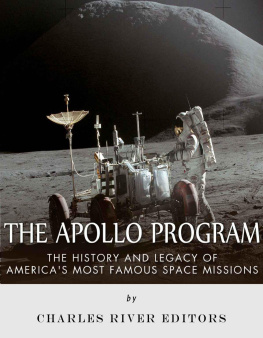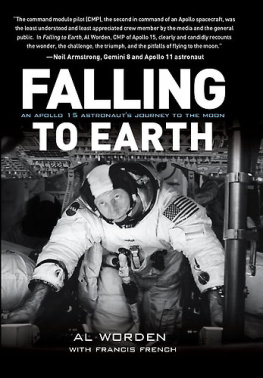Contents

STERLING and the distinctive Sterling logo are registered trademarks of Sterling Publishing Co., Inc.
NATIONAL SPACE SOCIETY and the distinctive National Space Society logo are trademarks of the National Space Society. All rights reserved.
Text 2019 Rod Pyle
Foreword 2019 Buzz Aldrin. All Rights Reserved.
Cover 2019 Sterling Publishing Co., Inc.
All rights reserved. No part of this publication may be reproduced, stored in a retrieval system, or transmitted in any form or by any means (including electronic, mechanical, photocopying, recording, or otherwise) without prior written permission from the publisher.
This book is an independent publication and is not associated with or authorized, licensed, sponsored, or endorsed by any person, entity, product, or service mentioned herein. All trademarks are the property of their respective owners, are used for editorial purposes only, and the publisher makes no claim of ownership and shall acquire no right, title, or interest in such trademarks by virtue of this publication.
ISBN 978-1-4549-3240-6
For information about custom editions, special sales, and premium and corporate purchases, please contact Sterling Special Sales at 800-805-5489 or .
sterlingpublishing.com
Interior design by Ashley Prine, Tandem Books
Image Credits see
Dedicated to the nearly half-million men and women who made our first expeditions to the Moon possible. You performed miracles in less than a decade.
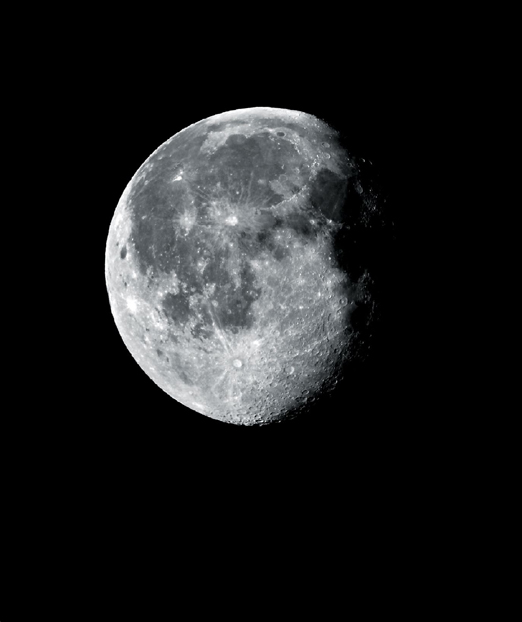
CONTENTS
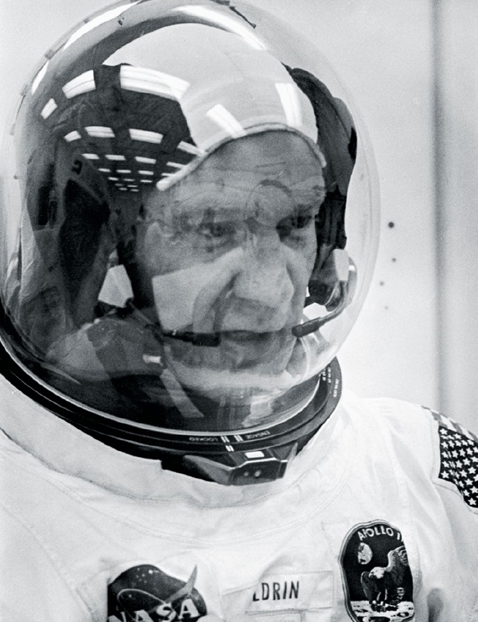
Edwin E. Buzz Aldrin suited up and doing a final check of his communication system before boarding for the Apollo 11 mission.
FOREWORD
On July 20, 1969, at 109:43:10 hours mission elapsed time, I stepped onto the lunar surface. The Apollo 11 mission that delivered us to that forbidding, rocky world was the culmination of a decade of intensive development and stunning human creativity, and that first landing forever changed how humanity looks at both itself and the heavens.
Neil Armstrong and I spent over two hours on the surface of the Moon. We set up a number of scientific instruments, spoke to the president of the United States, collected soil and rock samples, and conducted experiments in mobility, the physical nature of the lunar surface, and much more. We learned more about the Moon during our short visit than had been gleaned in all of human history. Five more Apollo crews explored the Moon, building on the knowledge gained from our first brief visit.
Now we stand on the threshold of a new space age. After decades working in Earth orbit with the space shuttle and the International Space Station, humanity is seriously considering how to send humans to explore what lies beyond. New rockets from companies like SpaceX, Blue Origin, and United Launch Alliance are poised to open new vistas in the heavens. Other nations and several private companies are pursuing space exploration with their own programs, and increasingly in partnership. My own designs for cycling spacecraft to efficiently take humans to Mars are gaining acceptance. The future of human space exploration and development is brighter than ever.
But this all began with those early, tentative forays into the heavens during the space advances of the 1960s, which led to those first steps on the moon in 1969. Im proud to have been a part of that incredible journey, as are my fellow astronauts who followed us to the Moon. Im also grateful to the 400,000 men and women who built the Apollo program, the American public who supported it, and the amazing accomplishments in space that have followed. Now its time to step up our commitment to space, and Im pleased to say we are doing so.
As I think about what space adventures await us, its hard to believe that it has been five decades since Neil and I walked on the Moon. I may be biased, but I think it was the high point of the twentieth century with regard to human achievement, and it shows what we can accomplish when we work together toward a great and worthy goal. My memories of that first journey and landing are still clear and will be with me forever. I hope you enjoy reliving those wonderful moments with me in this book.
Ad Astra!
Buzz Aldrin
Astronaut and Global Space Statesman
National Space Society Board of Governors
INTRODUCTION
NASA and I were born just two years apart. I entered this world in 1956, and Americas space agency was founded in 1958. My own lifelong fascination with space exploration and science grew in parallel with the Gemini program of the mid-1960s, and as it evolved into the Apollo flights, I became hooked. Mankind was going to the Moon, and I read everything I could get my hands on about the program.
Even to my young mind, this was humanitys greatest undertaking: the dramatic extension of our species beyond Earth and the opening of the final frontier. The Apollo program was the first step in the exploration of the cosmos Id seen just a few years earlier on science-fiction shows like Star Trek and Lost in Space and read about from writers such as Robert Heinlein and Ray Bradbury. And, in contrast to many of those tales, which represented a kind of strap it on and go approach to spaceflight, NASA executed its programs with calm efficiency, discipline, and determination. And, of course, America had to beat the mighty Soviet Union, who for so had long bested the US in spaceflight firsts, in their decade-long competition to land people on the Moon.
President Dwight D. Eisenhower (center) signed NASA into existence in 1958. Here, he is ceremoniously appointing T. Keith Glennan (right) and Hugh L. Dryden (left) its administrator and first deputy administrator, respectively, at the agencys opening.
But for a young person desperately interested in spaceflight, the 1960s were a trying decade. At the time, there were just three dominant television networks in the United States and only a handful of periodicals that routinely covered spaceflight and NASA. The books available on the topic were few, and those you could find were aimed at either young children or adult readersthere was not yet the plethora of reading material that would emerge during the following decade. During the long and challenging time leading up to that first Moon landing, just a few popular magazines and the occasional TV news brief covered the events in a manner meant for kids my age. It was hard to get my hands on a lot of material I could really understand, but this changed during the flights of Apollo 8 and Apollo 11, as the media swept in to cover the story of the century. Once we were on our way to the Moon, instead of just planning, the world became glued to TV sets and radios, following these missions of drama and discovery moment by moment.


